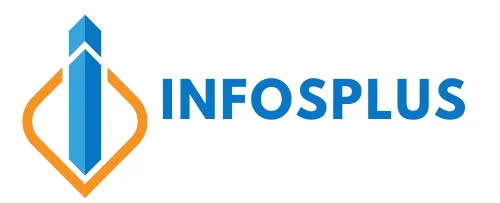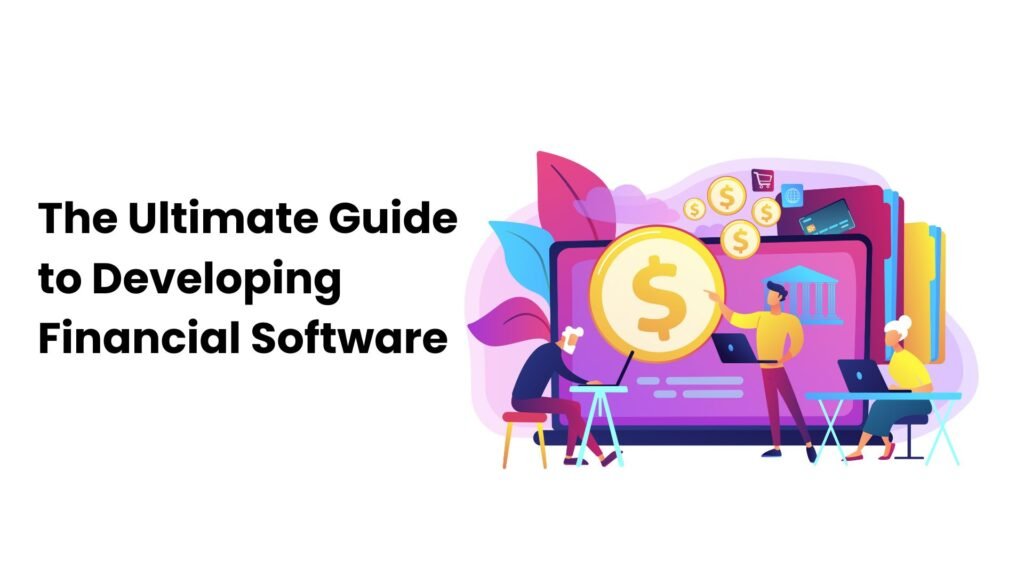To stay competitive in the financial world, you need an innovative and user-friendly AI Fintech software. This will help you to streamline your entire business operations. Not only this, it can also help to make decision financial decisions and enhance profit as well.
At the heart of this software is a team of experienced and certified software developers who know how to create innovative yet powerful financial software.
In this blog, we’ll explore a comprehensive process for financial software development. So, let’s get started!
Key Takeaway
- Highly popular financial software is open banking, neobanks, among more. These applications are designed with cutting-edge technologies, such as- artificial intelligence and machine learning, natural language processing and more.
- Developing fintech software involves various considerations, such as- user experience, user interface, legacy system integration, regulatory compliance and scalability.
- The Fintech application development costs range between $25,000 to $2,00,000. To develop financial software, you must have a clear idea of the end result.
What is the Software Development Process?
Financial development is a process of developing an application involving various considerations, which we discuss above. However, there are different types of financial solutions available, including _ banking, day-to-day financial operations, stock trading, etc.
From small considerations to complex trading platform and budgeting, it involves everything. It intends to enhance efficiency of financial organizations by optimizing their process, providing informed decision, ultimately driving profitability.
Today, financial industries leverage modern and advanced technologies like AI, ML, and more. However, there are various popular types of fintech apps, include:
- Investment apps
- Cryptocurrency apps
- Lending and borrowing apps
- Accounting apps
- Budgeting and saving apps
- Decentralized finance (DeFi) apps
- Insurance apps
FinTech Business Ideas
- Investment
- Banking
- Insurtech
- Payments
- Lending
- Virtual Currency -driven Platforms
Let’s dive into these points in detail:
- Investment
In the financial world, investment plays an essential role. And, the best thing is that the emerging trend of millennials and GenZ starting to invest.
These investment applications are designed to focus on a broad portfolio, including, debt, gold, virtual currencies, equities and more.
In the investment application, there are various innovative features can be added to make it lucrative, such as – in-app wallet, stock options, and more.
- InsurTech
Most insurance companies are looking forward to cost-effective yet innovative solutions to provide customers with quality services.
There are various insurance services including pet insurance, for blue-collar workers, car insurance, sachet insurance, and more. These offers longer repayment times, low premiums, automated claim processing, faster disbursement of funds and more.
This type of application enables them to reach mass customers from different economic background.
- Banking
Banking application has made banking solutions more accessible, flexible and efficient. With several customer-focused tools, it is designed for money transfer, and credit cards, neo-banking debit, micro credits, and more.
By leveraging advanced technologies and APIs, FinTech institutions make it easy for customers to get complete data and information in real time.
- Payment
Regarding the fintech model, payments remain the most preferred option for many firms. Creating invoice, making payment conveniently, and tracking incoming payment are the best features that FinTech companies looking for.
Due to its ease of use and efficiency, it is no wonder why payment solutions are in such demand.
Some businesses even look to solve every day hassles, such as splitting cash with friends, sending money internationally, etc. One thing that can be said about this fintech sub-sector is that it remains open to innovation.
- Lending
The lending world is also witnessing massive growth. The lending business offers easy loan facilities without any paperwork. AI-power insurance applications help organizations to analyze and assess the borrowers’ ability to pay back, approve, and issue loans – all within 24 hours.
- Virtual Currency-Driven Platforms
Virtual currencies are available in various models, such as – crypto exchanges, cryptocurrency development, metaverse-focused cryptocurrencies, and more.
These six features are used in virtual currency, such as – Secure Authentication, Model-Specific Functions, Payments, Dashboard, Notification and Integrations.
FinTech Application Development process
Developing financial software involves various processes. Each step is crucial to ensuring the application meets industry standards, user expectations, and regulatory requirements.
It also involves various development process, such as – market research, security measures, development & testing, maintenance, and updates to keep pace with technology advancements and user needs.
However, the process of developing a FinTech application is quite the same, but based on the different requirements, its features may differ. So, let see the process.
- Requirement Gathering
In this process, a software development company in India connects with a Fintech company to document all their project requirements. This process can be called software development consulting, where software development companies brainstorm on features, advanced technologies, and others.
- Conducting a Focus Group Study
Once the company gathers required information, they create a project scope, highlighting the milestones and timelines of the entire financial services software development project.
Fintech software development company brainstorms and creates a detailed design and application blueprint for a Fintech application, including integrating desired features and types of applications needed, defining the UI and UX, and ensuring that every step aligns with our client’s business objectives.
- Solidifying It Through User Experience Design
By understanding the needs and refining every touchpoint—from FinTech mobile applications to UI and UX—the company creates seamless experiences.
- Building the Bespoke Solution in Agile-based Sprint Models
FinTech application developers will create agile-based sprint models and integrate technology and security methods tailored to your needs.
- Testing the application
In this stage, developers conduct validation testing, which is crucial in the MVP process to ensure the elimination of all bugs.
- Deployment on Production Environment
At this stage, the FinTech application is deployed on operating systems like iOS and Android-after undergoing essential optimizations and configurations to guarantee smooth functionality.
- Continuous Support and Maintenance
FinTech applications undergo updates with new features and functionalities based on user feedback, ensuring their ongoing scalability.
How Much Does It Cost to Develop Financial Software?
Financial software development can cost you between $25,000 to $200,000, depending on the feature’s complexity level.
Let’s look at all three one by one.
- Digital Wallet Application_ The average cost of developing a digital wallet application can range between $15,000 to $40,000, depending on the features and complexity level.
- Banking Application _ The cost of a FinTech banking application may vary depending on the complexity level and integration of cutting-edge technology. The estimated costs are between $50,000 and $300,000.
- Lending Software _ However, the cost of developing finance software ranges between $40,000 and $200,000, depending on the features you choose, complexity level, and cutting-edge technology.
- Insurance Software _ Developing an insurance mobile application can range between $45,000 to $200,000.
- Personal Finance Application– A personal finance application’s development costs range between $30,000 and $150,000.
- Investment Application_ The estimated cost of developing an investment application is $20,000 to $40,000.
Conclusion:
Developing finance software involves various considerations, enabling precise financial management and decision-making processes.
From planning to implementing, this process ensures the software align with specific business needs and offer a secure, scalable and efficient financial management solutions.
So, if you have decided to develop financial software, you can hire a software development team to achieve your desired goal in the best possible way.




This blog provides an insightful overview of the financial software development process. The detailed breakdown of key considerations, such as user experience, security, and cost, is particularly helpful. With the rapid growth of fintech, the focus on emerging trends like AI and virtual currencies positions the content as highly relevant to businesses exploring innovative financial solutions.
Vavada może również zaoferować graczom możliwość spróbowania swoich sił w grach na żywo z prawdziwymi krupierami. Wachlarz dostępnych rozrywek mile zaskoczy, każdego kto chce łatwo znaleźć to czego potrzebuje.
магазин аккаунтов социальных сетей покупка аккаунтов
платформа для покупки аккаунтов площадка для продажи аккаунтов
маркетплейс аккаунтов аккаунты с балансом
аккаунты с балансом безопасная сделка аккаунтов
маркетплейс аккаунтов маркетплейс для реселлеров
купить аккаунт с прокачкой https://kupit-akkaunt-top.ru
продать аккаунт https://pokupka-akkauntov-online.ru/
Account Store Account Selling Service
Sell accounts Database of Accounts for Sale
Account Catalog Account Trading Platform
Marketplace for Ready-Made Accounts Account Acquisition
Account Trading Platform Buy and Sell Accounts
Account Selling Service Social media account marketplace
Account Buying Service Buy accounts
Account Trading Platform Buy Pre-made Account
Sell Account Buy and Sell Accounts
Account Exchange Service Account Sale
Social media account marketplace Account Buying Platform
profitable account sales profitable account sales
account selling service accounts market
sell pre-made account buy accounts
buy accounts online account store
find accounts for sale account acquisition
account selling platform https://buycheapaccounts.com
sell account buy account
account trading service account marketplace
ready-made accounts for sale sell pre-made account
account trading platform account market
sell pre-made account account sale
secure account purchasing platform website for buying accounts
account trading platform buy and sell accounts
account marketplace account marketplace
website for selling accounts account buying platform
accounts marketplace secure account purchasing platform
social media account marketplace accounts marketplace
account acquisition best-social-accounts.org
sell pre-made account ready-made accounts for sale
marketplace for ready-made accounts https://account-buy.org
website for buying accounts buy account
sell account account trading platform
account store online account store
secure account purchasing platform account selling service
online account store social media account marketplace
account store account store
secure account sales account purchase
database of accounts for sale guaranteed accounts
find accounts for sale https://accounts-offer.org
buy account https://accounts-marketplace.xyz/
gaming account marketplace https://buy-best-accounts.org
account trading https://social-accounts-marketplaces.live/
account purchase https://accounts-marketplace.live
account trading https://social-accounts-marketplace.xyz
account market https://buy-accounts.space/
account store buy accounts
account selling service https://social-accounts-marketplace.live
account trading platform https://buy-accounts.live
account buying service https://accounts-marketplace.online
buy accounts https://accounts-marketplace-best.pro
маркетплейс аккаунтов соцсетей https://akkaunty-na-prodazhu.pro/
магазин аккаунтов маркетплейсов аккаунтов
магазин аккаунтов kupit-akkaunt.xyz
маркетплейс аккаунтов соцсетей https://akkaunt-magazin.online/
биржа аккаунтов https://akkaunty-market.live
покупка аккаунтов https://kupit-akkaunty-market.xyz
магазин аккаунтов https://akkaunty-optom.live
магазин аккаунтов https://online-akkaunty-magazin.xyz/
магазин аккаунтов akkaunty-dlya-prodazhi.pro
покупка аккаунтов https://kupit-akkaunt.online/
facebook accounts for sale https://buy-adsaccounts.work
buy accounts facebook facebook ad account buy
buy fb ad account buy facebook account for ads
cheap facebook account https://buy-ads-account.click
buy aged facebook ads accounts https://ad-account-buy.top
buy a facebook account https://buy-ads-account.work
facebook account buy buy facebook old accounts
buy facebook ads accounts buy facebook advertising accounts
buy facebook ad account https://ad-accounts-for-sale.work
google ads agency account buy https://buy-ads-account.top
buy google ads accounts https://buy-ads-accounts.click/
facebook account sale https://buy-accounts.click/
buy google ad account sell google ads account
buy google adwords accounts https://ads-account-buy.work/
sell google ads account https://buy-ads-invoice-account.top
buy aged google ads account https://buy-account-ads.work
buy adwords account sell google ads account
google ads accounts buy google ad threshold account
google ads agency accounts https://ads-agency-account-buy.click
buy facebook business manager buy-business-manager.org
buy aged google ads account google ads accounts
buy business manager account buy-bm-account.org
buy facebook business manager verified buy-business-manager-acc.org
buy facebook verified business manager buy facebook ads accounts and business managers
fb bussiness manager https://buy-verified-business-manager.org/
buy verified bm business-manager-for-sale.org
fb bussiness manager https://buy-business-manager-verified.org
buy facebook business manager https://buy-bm.org/
buy verified bm https://verified-business-manager-for-sale.org
buy business manager account buy-business-manager-accounts.org
buy tiktok ads accounts https://buy-tiktok-ads-account.org
buy tiktok ads accounts https://tiktok-ads-account-buy.org
tiktok ad accounts buy tiktok ads
tiktok ads account for sale https://tiktok-agency-account-for-sale.org
buy tiktok ads https://buy-tiktok-ad-account.org
tiktok ads agency account https://buy-tiktok-ads-accounts.org
tiktok ads agency account https://buy-tiktok-business-account.org
buy tiktok ad account buy tiktok ads
tiktok agency account for sale https://tiktok-ads-agency-account.org
buy facebook old accounts buy accounts profitable account sales
buy facebook profile account exchange account exchange service